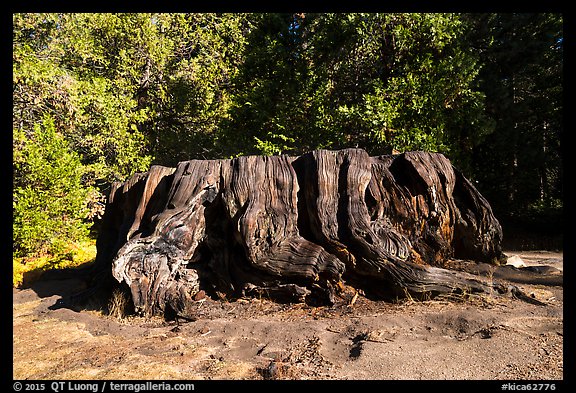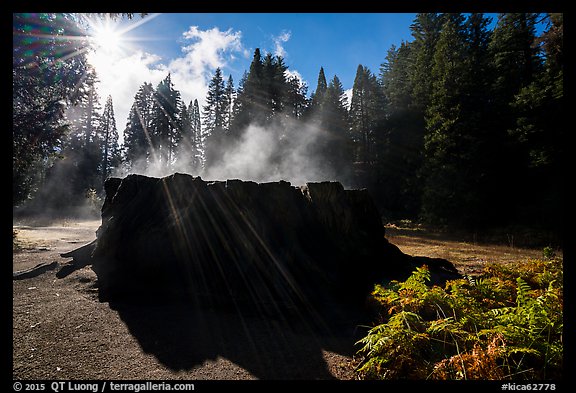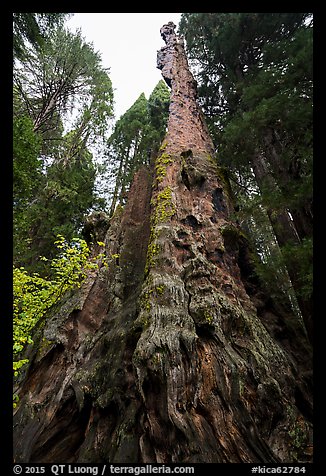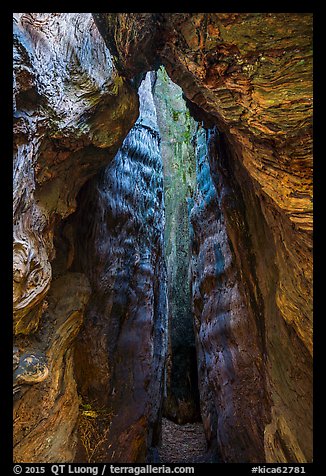Two Dead Trees, Big Stump Trail, Kings Canyon NP
No Comments
Although it is the first trail encountered after the Kings Canyon National Park entrance, most visitors skip the Big Stump Trail. However, it is an area quite different from the rest of the park, reserving discoveries. Photographically, the dead trees challenged me to find evocative images of what at first may not appear to be appealing subjects. Read on to see how I used light and viewpoint to transform those subjects.

Dead trees are a good reminder of what would have become of the sequoia trees without the establishment of the park. Of all the stumps, the Mark Twain stump is the largest, with a 90 feet circumference. The news that California had trees of such size was met with some incredulity on the East Coast. Sections of the Mark Twain tree were cut for museum exhibitions, remaining until today in the American Museum of Natural History in New York City and in the British Museum in London. An interpretive sign near the Mark Twain stump, entitled “The Ultimate Sacrifice” mentioned that the sacrifice allowed many people far from California to marvel at the immensity of the sequoias, and some wowed to preserve the remaining giants as living monuments. Unfortunately, logging entrepreneurs became interested in far more than a display pieces and measurements to satisfy the curious. Sequoia wood is so brittle that most of it shattered upon impact, leaving the lumber usable only for fence posts, grape stakes, and toothpicks – sad end for such a massive trees.

When approaching a subject such as the Mark Twain stump, instead of settling for the most obvious image, I look at it from all possible angles, walking a circle around it. After strolling behind the tree, I noticed that the backlight revealed a bit of steam rising from the stump. Although the front-lit side was more natural to photograph, the steam was almost invisible from there. The steam made the tree look like an altar, connecting with the sacrificial theme. It helped separate the profile of the stump from the forest. I waited for the moment when the sun just emerged from behind clouds to make visible the sun rays with a small aperture.

200 yards further, the Burned Monarch, whose base is still standing, had an estimated volume of more than 70,000 cubic feet, larger than any living tree. Unlike the other dead trees on the trail, the Burned Monarch was killed by lighting, which caused most of the tree to burn.

Walking around the tree, I noticed a small opening. I was excited to be able to crawl into the hollow stump for an inside view. I thought of a slot canyon. By setting up the tripod very low on the ground, I framed the interior of the Burned Monarch with the opening. I split the focusing distance between the opening and the back of the tree. Although for insurance, I focused at other distances so that I could stack the resulting frames if the depth of field was insufficient, the initial frame, shot a f/16, was sharp enough. I spent an hour trying a number of different compositions, but in the while the sun moved, which diminished the glow from reflected light, so I ended up preferring one of the first frames I photographed.
The 2-mile loop trail starts at a large parking area on the left of the road, less than a mile after the park’s entrance. There is much more to the trail than the two dead trees I featured on this post. The stumps seem quite out of place in an otherwise healthy landscape which include living giant sequoias and grassy meadows. If you don’t want to hike the entire loop, you could park on the pullout on the right side of the road past the park entrance station, cross the road, and walk 200 yards to the Mark Twain stump. Because most visitors head directly for the Grant Grove, the trail is very quiet.

